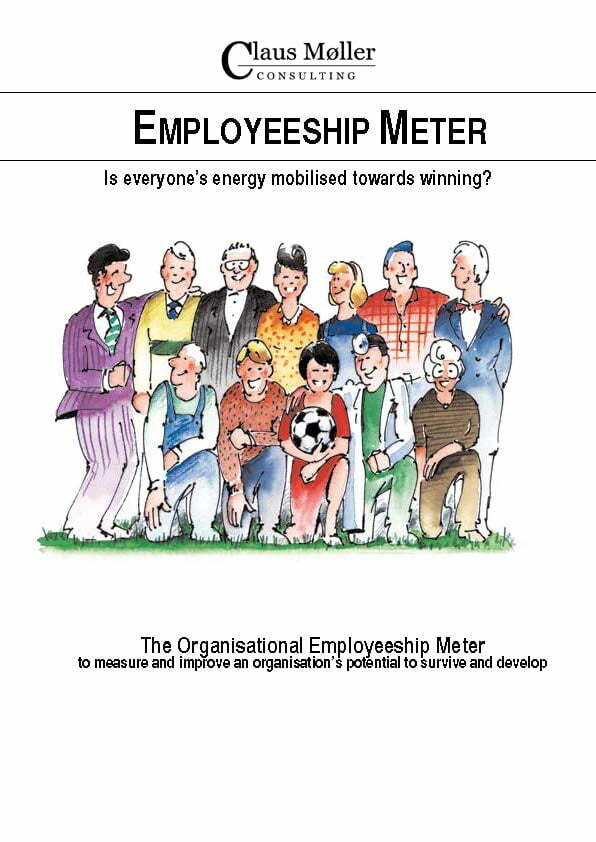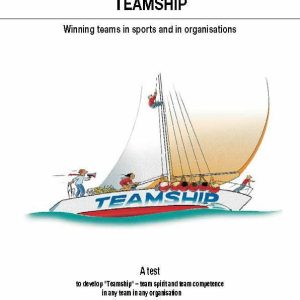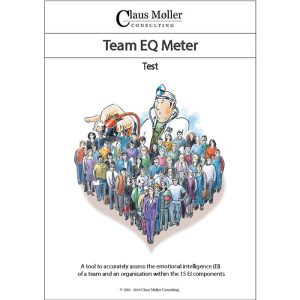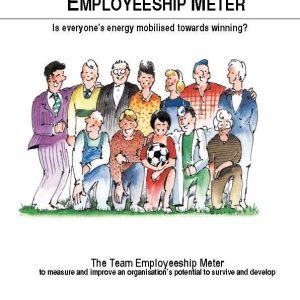Organisational Employeeship Meter
A tool to measure the degree to which the systems and policies of an organisation inspire employees to display Employeeship.
€1.500,00
Organisational Employeeship Meter
A CMC tool to measure to which degree the organisation’s culture, systems and policies encourage the employees to display Employeeship. Read more about Employeeship in Claus Møller's book Employeeship.
Hard and soft areas
The Employeeship attitude and behaviour of the employees are influenced by many different circumstances in the organisation which can be referred to by the simplified term “organisational systems and policies”. In order for everybody in the organisation to display Employeeship and therefore create an Employeeship culture, it is of vital importance for managers and their staff to make an effort in both the hard and the soft areas. It is also necessary for the organisation to have policies and systems which contain both hard and soft elements.
Hard areas
The hard areas comprise the concrete and technical aspects of the life in an organisation: systems, methods, technology, goals, finances, organisation, rules, procedures, hierarchy, physical environment, etc. The hard areas are the rational and logical aspects of the organisation. They are the easiest to explain and describe.
Many organisations are managed primarily on the basis of the prerequisites and regulations that apply in the hard world. This is reflected in the organisation’s hard:
- Personnel policies
- Employment contracts
- Reward systems
- Information systems
Soft areas
The soft areas comprise the emotional aspects of the life in an organisation: type and style of communication, working environment, management style, attitude towards people, ethics, tradition, team spirit, sense of belonging, security, challenges, etc.
The soft areas relate to the so-called corporate culture. The soft areas may be difficult to specify and describe.
How to use the tool
The tool should be used by all employees to evaluate the degree to which the systems and policies of an organisation promote an Employeeship culture. The use of the tool may also be seen as an important part of the learning and development process.
This will enable everyone to understand the framework that creates the best conditions for mobilising everyone’s energy towards success. There are 14 areas within which organisations often establish systems and policies. Each area contains a number of positive statements characterising a system or a policy which promotes the development of an Employeeship culture.
- Mission statement
- Vision
- Organisation
- "We" culture
- Management system
- Management style
- Personnel policies
- The employment contract
- Remuneration and recognition
- Career development
- Internal communication
- Information systems
- Quality policies
- Learning company
How the organisation can use the tool
- The organisation can undertake a particularly thorough evaluation of each of the critical factors by asking all the employees to give the organisation a rating for each statement in the relevant section.
- The overall result of the Organisational Energy Meter should be carefully discussed everywhere in the organisation. Everybody should be invited to come up with suggestions, ideas and views which are then discussed further in a management meeting. The meeting should result in a concrete plan for maintaining and developing the Employeeship culture within the whole organisation.
- The Organisational Energy Meter should be used once a year. The tool can also be used as a benchmarking tool to determine any changes and successes.
How the individual can use the tool
- Every employee should carefully study the result of the “Organisational Energy Meter” and reflect about whether the total results display his/her experience of the Employeeship culture in the organisation. You may also define what you as an individual can do to contribute to creating and maintaining an Employeeship culture in the organisation. With this new awareness, everyone will be better equipped to contribute to developing the Employeeship culture.
- Every employee should make suggestions for improvements to the existing systems and policies.
- As the new systems and policies are introduced, every employee should contribute to their implementation without delay. This can for example be done by giving feedback as to whether the new systems and policies work as intended.




